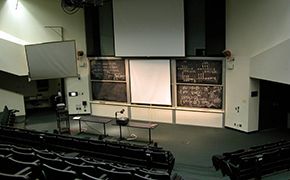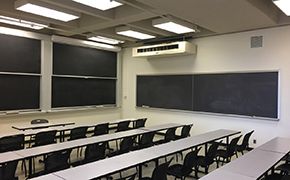
Instructor Insights pages are part of the OCW Educator initiative, which seeks to enhance the value of OCW for educators.
Course Overview
This page focuses on the course 5.07 Biological Chemistry I as it is typically taught at MIT. John Essigmann, Professor of Chemistry & Biological Engineering and Director of the MIT Center for Environmental Health, and JoAnne Stubbe, Professor of Chemistry & Biology and National Medal of Science recipient, share their insights about the pedagogy behind this core learning experience for MIT chemistry majors.
Taught through lectures and recitations, this course examines the chemical and physical properties of the cell and its building blocks, with special emphasis on the structures of proteins and principles of catalysis, as well as the chemistry of organic/inorganic cofactors required for chemical transformations within the cell. Topics encompass the basic principles of metabolism and regulation in pathways, including glycolysis, gluconeogenesis, fatty acid synthesis/degradation, pentose phosphate pathway, Krebs cycle and oxidative phosphorylation.
Course Outcomes
Course Goals for Students
- Gain an introduction to all the chemical players of life, their structures and chemistry and, consequently, their function.
- Learn about the central pathways of metabolism.
- Understand how pathways are regulated and integrated under different environmental conditions.
Meet the Educators
My interests have been in chemicals from the environment ... and how they interact with biological systems.
—John Essigmann
In the following videos, Professors JoAnne Stubbe and John Essigmann describe how they became interested in biological chemistry and share what they focus on in their research.
JoAnne Stubbe
John Essigmann
The morphological unit of life is the cell, whether you're a flea or you're an elephant.
—JoAnne Stubbe
Professors JoAnne Stubbe and John Essigmann sat down with George Zaidan, a former 5.07 Biological Chemistry student, to discuss how they teach the course. The following videos capture excerpts of their conversations.
JoAnne Stubbe
- Focusing on the Morphological Unit of Life
- Using a Vitamin Bottle as a Teaching Tool
- Teaching Central Pathways to Help Students Understand Metabolism
- Why Students Should Memorize Amino Acid Side Chains
John Essigmann
Curriculum Information
Prerequisites
Requirements Satisfied
- GIR

- REST

- 5.07 Biological Chemistry I can be applied toward a Bachelor of Science in Chemistry, as well toward a Bachelor of Science in Chemistry and Biology.
Offered
Every fall semester
Assessment
The students' grades were based on the following activities:
 8% Weekly problem sets
8% Weekly problem sets 8% Weekly quizzes
8% Weekly quizzes 50% Closed book, closed note exams (3)
50% Closed book, closed note exams (3) 34% Final exam
34% Final examStudent Information

Breakdown by Year
Mostly sophomores and juniors
Breakdown by Major
Nearly all of the roughly 20 chemistry majors per year take 5.07. The largest constituency, however, is chemical engineering students.
Typical Student Background
Students who take 5.07 tend to have strong backgrounds in, and enjoy, organic chemistry. Most of the students want to go into either medicine or graduate school in advance of a career in either the drug industry or academics.
During an average week, students are expected to spend 12 hours on the course, roughly divided as follows:
Lecture
- Meet 3 times per week for 1 hour per session.
- During lectures, the instructor introduces core concepts, often illustrating the concepts with examples.
Recitation
- Meet 2 times per week for 1 hour per session.
- In recitations, an instructor or teaching assistant elaborates on concepts presented in lecture, working through new examples with student participation, and answers questions.
Out of Class
- Outside of class, students prepare for exams and complete readings and problem sets.
Semester Breakdown
| WEEK | M | T | W | Th | F |
|---|---|---|---|---|---|
| 1 |  |  |  |  |  |
| 2 |  |  |  |  |  |
| 3 |  |  |  |  |  |
| 4 |  |  |  |  |  |
| 5 |  |  |  |  |  |
| 6 |  |  |  |  |  |
| 7 |  |  |  |  |  |
| 8 |  |  |  |  |  |
| 9 |  |  |  |  |  |
| 10 |  |  |  |  |  |
| 11 |  |  |  |  |  |
| 12 |  |  |  |  |  |
| 13 |  |  |  |  |  |
| 14 |  |  |  |  |  |
| 15 |  |  |  |  |  |
| 16 |  |  |  |  |  |
 No classes throughout MIT
No classes throughout MIT Recitation
Recitation Problem set due date
Problem set due date Lecture
Lecture No lecture, time off for exam
No lecture, time off for exam

 Room 1 of 2
Room 1 of 2 
